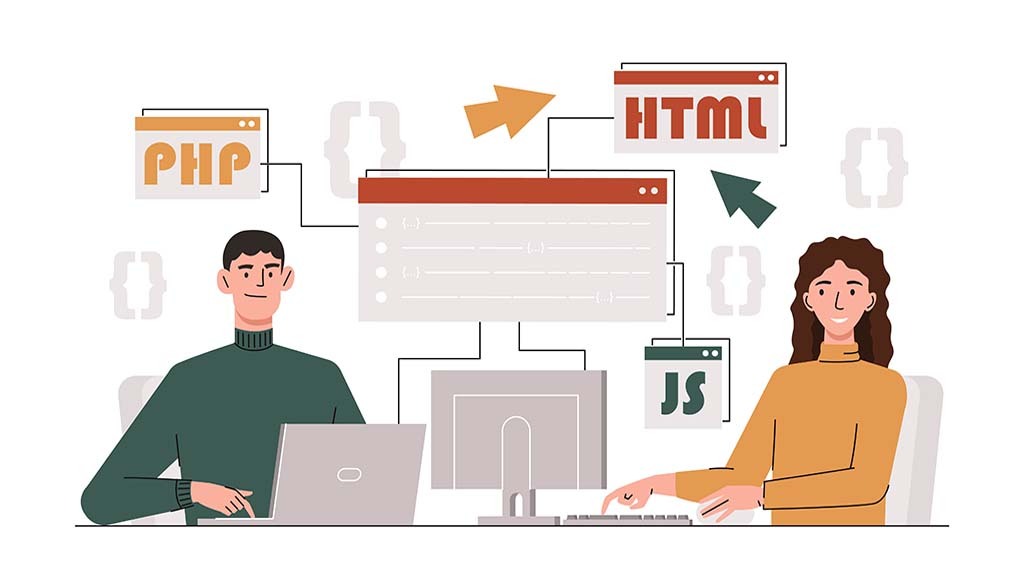What are the Frontend and Backend Web Development Technologies
In This article, we discuss frontend and backend web development technologies.
Today, programming is a field that does not stop growing; developing web pages, and creating applications and programs that facilitate our day-to-day or improve the user experience, are crucial functions that developers perform.
The terms front-end and backend have unique and distinctive qualities. They act as separate units that interact with each other to ensure the functionality of a site.
To have an excellent digital page, more than a domain, hyperlinks, meta tags, and heading tags is required, which is why we will explain why these 2 concepts are so important.
What is better, Backend or Front-End?
None is more important than the other; they complement each other and need each other to function since, on the one hand, websites must be beautiful and friendly, and on the other hand, that same site must be functional and must be able to perform operations.
In the front end, you need people with creative abilities, and in the back end, you need people with very good logic to solve problems.
What is the front end?
The front-end is the part of web development that is dedicated to the front part of a website, in a few words, the design of a website, from the structure of the site to the styles such as colors, backgrounds, and sizes until reaching the animations and effects.
It is that part of the page with which its users interact. It is all the code that is executed in a user’s browser, which is called a client application, that is, everything that the visitor sees and experiences In a direct way.
A front-end is the person who is basically dedicated to web design, but this does not mean that they do not touch code. Both the front end and the backend are in contact with code all the time.
Within the front-end area, we work with languages mostly on the client side, such as:
HTML (hypertext text markup language) tags are used to structure and organize the content of the web).
CSS (responsible for the format and visual design of web pages written in Html) to give the site structure and style.
Javascript (a programming language, fast and safe to program data centers, consoles, mobile phones, or the Internet) complements the above and give dynamism to websites.
HTML and CSS are markup and styling languages. Javascript is a programming language.
From them, a large number of frameworks and libraries have been generated that increase the capabilities available to generate any type of user interface, such as React, Redux, Angular, Bootstrap, Foundation, LESS, Sass, Stylus, and Post CSS, among others.
It is known as the client side.
What is the Back End?
While the front end is the programming layer executed in the user’s browser, the backend processes the information that will feed the data front end.
It is the data access layer, whether it is from software or from a device in general, it is the technological logic that makes a web page work, which is hidden from the visitor’s eyes.
The backend of a solution determines how well the application will run and what experience, positive or negative, the user will get from using it.
Working in this section is something totally different from the front end since it requires mastery of other programming terms and languages that require logic since this area is also in charge of optimizing resources, site security, and other factors.
A development framework is one that works on the server side and ensures that people can enjoy a pleasant experience; its main purpose is that development processes are faster, that code fragments can be reused that already exist and that good practices are carried out through the use of different patterns.
With them, you can write code or develop applications with minimal effort. The most used programming codes are PHP, JavaScript, Python, and Ruby, among others.
The tools used are code editors, compilers, debuggers to review security bugs, and database managers.
The workflow of a backend consists of giving functions to a site; while the front-end makes a static site, the backend then gives it functions and adapts the programmed system to that website.
Other functions that are managed are:
- Creation of functions that simplify the development process.
- Logic actions.
- Connection with databases.
- Use of web server libraries (an example may be to implement caching themes).
In addition, you must ensure the security of websites and optimize resources to the maximum so that the pages are light

How the front-end and Backend work
Consider that a website is made up of a wide variety of documents that are related to each other through links, which means that if you want to enter a website and type the URL in the browser, it translates as you are requesting that it be displayed on said website.
The next thing the device will do is check what server software the site has. The server receives this information, verifies the request it made, and allows you to execute the action.
Sometimes, the case may arise that a connection to the database is not required; for example, you access a page, and when you log in, a request is automatically made that connects to the database to verify the accesses and the subscription that you have, it is there where the backend returns the response to the server.
Then the front-end appears, which is the one that will receive the information transmitted by the backend and will accommodate it in the interface of the website or user profile.
Advantages of the Front-end and the Backend
Greater Scalability
It is a much more scalable environment; being separated, it is possible that one of the two parties needs more resources at some point, so it becomes
easier and more efficient to divide the resources.
Different Development Teams
By having these two parts that differ, you can have various profiles in your team dedicated solely to their part of the job.
Expansion of Available Platforms
Imagine that you have a website with a separate backend and front end; If you need to develop a native app for mobile devices, its development will be much easier since you would only focus on developing the app.
You would already have the communication API developed, and perhaps it would only require small adjustments; in addition, in the development process, the front part of your existing website would not be affected at any time.
Migrations and Upgrades are Easier
Normally, when the backend is already developed, what is most often changed is the front-end part; for that reason, if they ask you for design updates on the web or a change of hosting, it is easier since the server part is always to be working for many updates that are in the visual part.
What is the difference between the Front end and the Backend?
It is true that they are determined by the functions they perform on a website, but there are important similarities and differences that we will present below.
Different Concepts
The differences between the front-end and backend are evident; as mentioned above, one is the part of the website that you can see and interact with, while the backend encompasses the structural operation and is not visible to the client.
Different Roles
Front-end has to do with visual aspects that anyone experiences; in the backend, everything that happens in the background is attributed because it facilitates web interaction.
Front-End and Back-End Developer Roles
A web designer is in charge of building websites, taking into account the visual aspects.
Backend web developers make sure that the data and systems requested by the software work efficiently.


